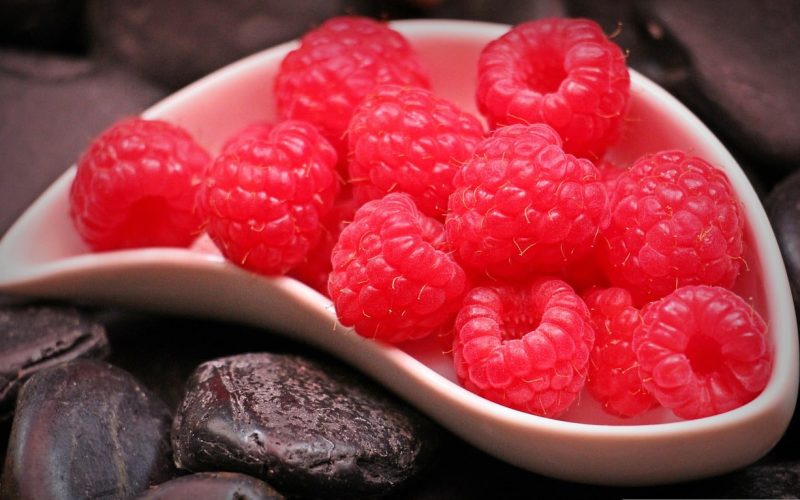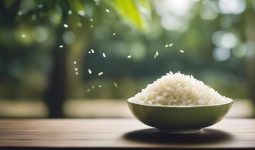This article in our series on food color examines various red foods. The pigments found inside the cells give red foods their color.
Plant-based diets and meat-based foods include different pigments that, when consumed, have varying effects on our health.
Here are some of the best red foods. Please read on.
1. Beef

The third most popular meat consumed worldwide is beef. When prepared properly, a lean steak can be a nutritious addition to your diet thanks to its high protein, niacin, vitamin B12, iron, and zinc content.
No wonder beef is produced and consumed in some of the world’s largest quantities in nations like New Zealand, Australia, the United States, Uruguay, and Argentina.
The myoglobin molecules in beef, which contribute to its iron concentration, give the flesh its intensely red color.
2. Blood Orange
This fruit may appear to be a typical orange from the outside, but blood-colored juice will spill out when you cut into it! The flesh can have a variety of red hues, ranging from crimson blood-like to maroon or even dark pink.
Furthermore, this beautiful fruit is a fantastic source of vitamin C, antioxidants, potassium, and fiber while having a somewhat tarter flavor than ordinary oranges.
Blood oranges are a vibrant complement to baked goods, cocktails, and salads. They also make delightful juice.
3. Carmine
Carmine is one of those foods you may not have ever heard of but undoubtedly consume daily. Red food coloring called carmine is used in many products, including yogurt, fruit juices, ice cream, jelly, hot dogs, and more.
However, if you don’t like insects, you could find this colorant repulsive: carmine is also known as cochineal extract, and cochineal is a beetle. Yes, this dark crimson food coloring is a mixture of ground insects.
Despite how unsettling it may seem, the red pigment has been approved by the FDA and is used in various everyday items, including paintings, ink, medications, and cosmetics.
4. Cherries
A popular seasonal fruit is this tiny red stone fruit. It adds flavor to drinks and sweets, ranging from yellow to deep, blackish crimson.
Cherries are a tasty way to receive your recommended daily vitamin C, potassium, fiber, minerals, antioxidants, and anti-inflammatory chemicals.
Furthermore, all of these support a healthy heart and immune system. However, similar health advantages do not apply to maraschino or glacé cherries because the canning process removes many nutrients from these tiny fruits.
5. Beets
Beets are root vegetables typically vivid red in hue. They have a fascinating past. Either Italy or Germany is thought to have been the first to produce beetroots around 1542.
Furthermore, beets can be juiced or pickled in addition to tasting delicious raw. Even their leaves, sometimes known as beet greens, are edible. The main ingredients of beets are carbs, fiber, and water.
6. Cranberries
This natural superfood from North America is another well-liked source of carbohydrates, fiber, minerals including manganese and copper, and vitamins C, E, and K1.
Although cranberry sauce is unquestionably a Thanksgiving must-have, these tiny berries can also be found in juices, stuffing, casseroles, and desserts.
Furthermore, scientific studies have supported the traditional use of cranberries as a treatment for urinary tract infections.
Cranberry juice includes a specific component that stops bacteria from colonizing the bladder, speeding up the body’s recovery from cystitis.
7. Goji Berry
Goji berries may not have been well-known twenty years ago, but their current status as a superfood has given them widespread recognition.
These vivid orange-red berries, also known as wolfberries, are touted as having medicinal properties that can treat conditions like diabetes, hypertension, fever, and age-related vision issues.
They are also a great source of fiber, iron, protein, vitamins A and C, and antioxidants.
However, before including goji berries in your diet in any proportion, patients taking blood thinners like warfarin should consult with their doctor because there can occasionally be interactions between the components in the berries and your medicine.
8. Hibiscus Tea
This herbal tea, which is dark red in hue and made from dried portions of the hibiscus plant, is native to Southeast Asia and North Africa. It may be sipped hot or cold. The tangy flavor is reminiscent of cranberries.
Hibiscus Tea has been shown in certain studies to lower blood pressure, high cholesterol, and triglycerides in people with diabetes or metabolic syndrome. Still, its efficacy as a medicinal supplement has not yet been established.
To prevent additional interactions, patients who take hydrochlorothiazide are encouraged to speak with their doctor before consuming hibiscus tea.
9. Cardinal Grapes
Cardinal grapes, also known as table grapes, are crimson. Their flesh has a delicious, sweet flavor, and their skin is sensitive and delicate.
The Cardinal grape, first grown in California in 1939, is recognized as an evergreen vine that may be consumed as a fruit or used to make wine.
They provide vitamins A and C, calcium, iron, carbohydrates, and protein.
10. Ketchup
This sweet, tangy sauce is a common topping for hamburgers, hotdogs, French fries, and other foods. It first appeared in Southeast Asian “kecap,” a thick, black sauce with a soy or fish base.
It is said that Europeans created modern-day ketchup, a tomato-based condiment, to imitate the sauce.
Furthermore, modern tomato ketchup is created with tomatoes, sugar, vinegar, seasoning, and spices to obtain its flavor.
Also, there are suggestions that tomato ketchup lowers the risk of prostate cancer, boosts sperm count, lowers cholesterol, and improves vision. However, the sugar level implies you should only consume it in moderation.
11. Kidney Beans
This tiny red bean must be known to fans of Mexican chili con carne, Spanish caparrones, Indonesian brenebon, or Iraqi fasoulia.
These kidney-shaped pulses complement a variety of vegetarian and vegan cuisines because they are a crucial food crop and a top vegetable source of protein. Additionally, they are a great source of fiber and can improve intestinal health.
However, a word of caution: be careful when cooking kidney beans and ensure this red bean is always cooked.
When kidney beans are boiled in water, the poison phytohemagglutinin, which is hazardous to humans when consumed raw, is eliminated.
12. Lobster
This excellent shellfish is one of the most mouthwatering delights. It is often served boiled or steamed and is a good source of protein, zinc, phosphorus, magnesium, vitamins B12 and E, and traces of omega-3 fatty acids.
It is also a great source of copper and selenium. This seafood contains the keto-carotenoid astaxanthin, which gives cooked lobster its distinctive brilliant red color.
If you have a shellfish allergy, it is best to avoid eating lobster, and pregnant women should limit their intake because it may contain a small amount of mercury.
13. Caribbean Red Papaya
Caribbean red papaya’s flavor is comparable to melon’s, and it smells pleasant but not overpowering.
The fruit has a yellow exterior and a red interior. It contains papain, which helps with digestion and enzymes.
The Caribbean red papaya was first grown in Guatemala. Mexico, however, is the fruit’s primary competitive growing zone. The fruit contains vitamins A and C and sodium, iron, calcium, and potassium.
14. Marinara Sauce
Marinara sauce, a tomato-based sauce, is a frequent accompaniment for spaghetti or vermicelli in Italian-American meat and seafood meals.
It is produced with ingredients including tomatoes, onions, garlic, and herbs, which provide the sauce with flavor and are good sources of antioxidants and vitamin C.
The sauce’s concentrated fresh components may lower the risk of diabetes and protect against heart disease.
15. Cashew Apple
Marinara sauce, a tomato-based sauce, is a frequent accompaniment for spaghetti or vermicelli in Italian-American meat and seafood meals.
It is produced with ingredients including tomatoes, onions, garlic, and herbs, which provide the sauce with flavor and are good sources of antioxidants and vitamin C. The sauce’s concentrated fresh components may lower the risk of diabetes and protect against heart disease.
16. Muntingia
The Jamaican Cherry is another name for the berry you can eat from the Muntingia calabura tree. Although it is currently widely distributed throughout the tropics, it is originally native to the area from Mexico south to Bolivia.
When ripe, the berries have bright red skin and are filled with small edible seeds. They grow in bunches on the tree.
Furthermore, when eaten fresh, the fruit can be converted into jam and has a pleasant flavor. These little berries have a powerful anti-inflammatory impact and have been used in traditional medicine to treat respiratory issues, diarrhea, and other ailments.
17. Paprika
Some of your favorite spicy meals get color from this red ground spice. The pulverized, dried red fruits of the Capsicum annuum plant, which range in heat from moderate to highly fiery, are used to make paprika.
Paprika is common in many regional dishes from the Middle East to Central and South America to South and Eastern Europe.
Before grilling or roasting meat cuts, it is commonly used to season and color rice, stews, and soups. It also has some vitamins B6 and E and is a rich source of vitamin A for the diet.
18. Cloudberry
The polar regions of Europe, Asia, and North America are home to the fruit known as cloudberry, which has a raspberry-like appearance.
Some nations classify cloudberries as an endangered species due to their rarity and the fact that they can only flourish in cool, temperate areas.
Furthermore, it has an amber color and a remarkable fusion of sour, acidic, and floral flavor characteristics. Calcium, iron, riboflavin, thiamin, and vitamins A and C are among the minerals found in cloudberry.
19. Radishes
The Cherry Belle, Crimson Giant, Champion, and French Breakfast types of radish all have brilliant red skin. They are among the most widely grown varieties.
Furthermore, the root vegetable tastes like watercress with a dash of mustard. More than just salads, this fresh, healthful vegetable adds a crispy texture to tacos, sandwiches, spaghetti, and pizza.
Radishes also taste incredibly good: roasted, grilled, or pickled. Their active enzymes can aid digestion.
20. Raspberry
This popular summer fruit belongs to the Rubus genus, which has numerous species found all over the world. The European red raspberry (Rubus idaeus) and the American red raspberry (Rubus strigosus) are the most well-known varieties.
AloRaspberries are an excellent source of vitamin C when consumed fresh or in desserts, and they also give jams and juices a sweet and tangy flavor.
21. Crab
The small size and tough shells of crabs define them. Crabs come in more than 4,500 different species.
Depending on the species, crabs can be seen in various colors. Muddy green, blue, and brown are the most prevalent hues. But when they’re cooked, they turn bright red.
Crab feasts were documented for the first time in the 1200s. They have no carbs, are low in fat, and are a great source of protein.
22. Redcurrant
The gooseberry family’s genus Ribes, which includes the redcurrant bush, is endemic to Europe and is known for its vivid red, translucent berries.
Because it is high in antioxidants and a strong source of vitamins C and K, manganese, and potassium, this red fruit is also referred to as a “superfruit.” Redcurrants work well in jellies, syrups, or baked foods. You can even use them in a face mask to refresh dull skin.
23. Red Delicious Apple
This red apple type is arguably the most frequently grown domestically and internationally. The apple has a distinctive red exterior and white flesh that is delicious, crunchy, and subdued sweetness.
Furthermore, the fruit contains a large quantity of fiber, calcium, magnesium, phosphorus, potassium, and vitamin K. It also contains a lot of anthocyanins, which are good for the heart.
24. Ham
Brightly colored ham is cured pork prepared from a pig’s hind leg. It comes in various varieties, including prosciutto, serrano, and Jamón Ibérico.
They were found during the Etruscan civilization and are now a common addition to many recipes, including pasta, pizza, sandwiches, and even on their own as an appetizer.
Hams are rich in fat and protein. Additionally, they are a crucial source of vitamins and minerals like selenium.
25. Jujube
South Asian-born jujube is also called a red date or Chinese date. The discovery took place approximately 9000 BC.
Jujube fruit is tasty and very little. When dried, it has a chewy texture and a taste similar to dates. When ripe, it turns dark red or purple.
Furthermore, Jujube fruits contain trace amounts of other vitamins and minerals and are notably high in vitamin C. They are also a good source of potassium, fiber, and iron.
26. Plum
Plums are ripe, oval, juicy fruits with flattish, sharp stones that turn scarlet, purple, or yellow. They taste sweet and have a faint tangy flavor. Plums can be consumed raw or added to pies, jams, and wines.
Furthermore, this fruit comes from Asia and has been raised for centuries. Also, the Romans brought it to Europe in the first century AD. Plums are rich in potassium, copper, and manganese, including vitamins A, C, and K.
27. Red Grapes
Grapes are among the most adaptable fruits because they may be consumed either fresh or processed to make your favorite wine, jam, juice, jelly, vinegar, and raisins.
Antioxidants found in red grapes can help your blood vessels relax and lessen inflammation.
While around 90% of the table grapes consumed in America are grown in California, a third of the world’s vineyards are found in Italy, Spain, and France.
28. Red Peppers
This red salad vegetable, also known as bell pepper, ornamental pepper, capsicum, or sweet pepper, has a mild, earthy flavor.
The plant, which originates from Central and South America, is a common element in Mexican and South American cuisine. It also offers minerals and antioxidants and is a rich source of vitamins A, B, and C.
29. Red Quinoa
The South American native quinoa comes from the Chenopodium quinoa flowering plant and has recently gained popularity as a high-fiber, gluten-free substitute for most carbohydrate sources.
Furthermore, red quinoa is sometimes called “Inca Red,” as Inca troops thought red gave them power for combat.
This red pseudo-grain has more fiber, antioxidants, and minerals than the white variety and contains all nine essential amino acids, making it a good source of protein.
30. Red Rice
While white rice is frequently used as an essential carbohydrate, rice is a staple diet for more than half of the world’s population.
White rice is created when the bran covering enclosing the seed is removed from the rice grains during polishing.
However, the bran layer offers several health advantages, including fiber’s digestive benefits. Red rice is a variety of unpolished rice in which the anthocyanin chemicals in the plant material give the bran layer a deep red-maroon hue.
About 95% of the red bran layer comprises fiber, iron, zinc, potassium, manganese, and other minerals. Red rice offers the highest nutritional content of all the rice kinds now on the market.
31. Rambutan
The rambutan is a tropical fruit with a huge seed, a white fleshy interior, and a red or yellow hairy exterior. It tastes creamy and sweet.
Rambutan is a native fruit of Malaysia and Indonesia. Between the 13th and 15th centuries, Arab traders found it.
Rambutans are abundant in potassium and vitamin C. They also contain trace levels of manganese, iron, copper, and vitamin B9.
32. Red Wine
Red wine, which can range in color from vivid violet to brick red to brown depending on its maturity, must be included in any list of red foods.
For thousands of years, red wine has also been consumed worldwide at social, religious, and cultural gatherings.
Wine is a fantastic source of antioxidants like resveratrol and procyanidins and gets its deep red color from the skins of the grapes used in winemaking.
Resveratrol and procyanidins have been found to have an anti-aging impact on the skin, although excessive alcohol consumption is not advised. Red wine, when consumed in moderation, has been demonstrated to protect the heart.
33. Sausages
One of the most popular meat items is sausage; the red versions get their color from the seasonings and cooking methods.
Red sausages’ specific components vary depending on the region’s cuisine. Still, hot chili paste, carmine, cayenne pepper, and sumac are some of the ingredients frequently used to give sausages a strong flavor and a vivid red color.
Furthermore, the variety of flavors found in Italian pepperoni, Moroccan Merguez, Chinese Hóng cháng, Filipino Longaniza, and the well-known hot links from the Southern US are evidence of the relationship between the variety of procedures used to manufacture sausages and the type of flavors.
34. Strawberry
This summer fruit is well-liked for its aroma, vivid red color, juiciness, and sweetness. Although it is a popular flavor for milkshakes, ice cream, jelly, and juice, it is best consumed raw for maximum health advantages.
This red fruit boosts your immune system while defending your heart because it contains antioxidants, manganese, folate, and potassium. Strawberry scent is additionally employed in soap, candies, lip gloss, and fragrances.








